Because It’s Critical to Clear Communication, Whether You’re the Contractor or the Customer.

Last week Gene explained to John what project information needed to be gathered…
- Project info (customer name, mailing address, project address if different than mailing, phone number, email address, project overview, budget, project deadline, any other relevant information that you need)
- Measurements and dimensions, existing and new
- Building materials, existing and new
- Pictures of pertinent areas and existing construction
- Customer’s design ideas and finishes
Overlooking or forgetting something is a sure way to lose money when doing a construction project.
This week they’re going to take the information gathered and turn it in to a scope of work. This will be the foundational form of communication between everyone involved in the process, i.e., customer, contractor, sub-contractors, employees, etc.
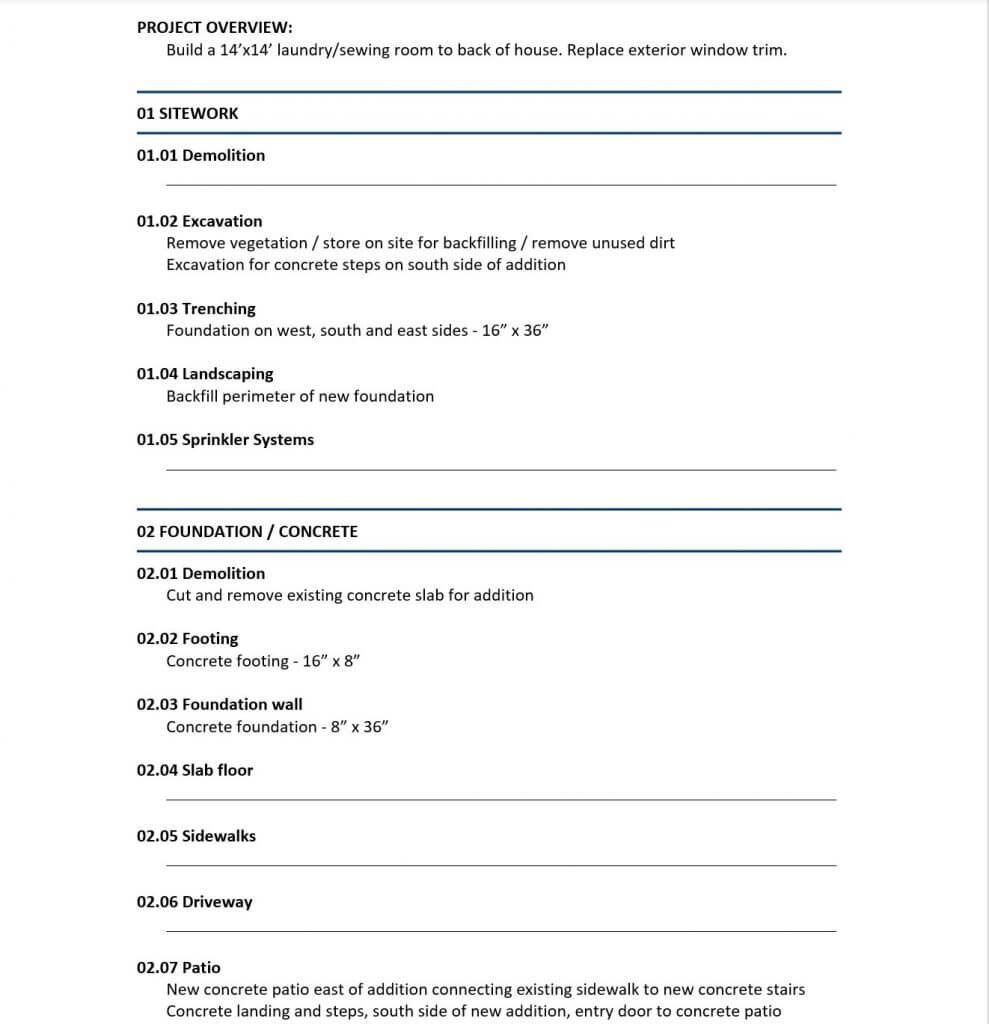
As they get started this week’s meeting Gene asks John if he had an opportunity to use the Bid Sheet this past week and if so, how it worked.
“Yes.” said John. “It was a little awkward in the beginning. By the time I was finished gathering the project information I was glad I had it, because there were a couple of things that it reminded me to do.”
Gene replied, “That’s great. Do you have any questions?” Not yet.” said John. Gene smiled, “You will before we’re done.”
Okay. Did you bring it with you? Asked Gene. “I did.” said John, “I’ve got it on my laptop.” Gene told him to open it up and follow along. “Today we’re going to work on the most important part of communication between contractor and customer.
The Scope of Work
What is a Scope of Work?
A Scope of Work clearly defines and explains the work to be done. It should describe what is included in each specific task in terminology that both the customer and the contractor understand. A scope of work describes the work to be done on a project, who is responsible for completing the work, how the work must be performed (techniques used), and what materials will be used. It helps in the smooth operation of a project, minimizing situations leading to disputes. It is the first step to building a mutually beneficial relationship between a contractor and customer.
Communication with the customer needs be simple and direct while explaining clearly and thoroughly.
After having gathered the information needed for the project using the Bid Sheet, write out in a few sentences, or less, of what each specific task is going to consist of. Explaining what you’re going to do in a way that a person with little or no construction knowledge can understand. Include as much detail and specifics as is needed to be clear on what is or is not included as a part of the project.
Once this process has been finished for each task included in the project, you have a Scope of Work ready to be transferred to a blank Proposal template.
Here’s an example of a Scope of Work using the information from the Bid Sheet we worked on last week.”
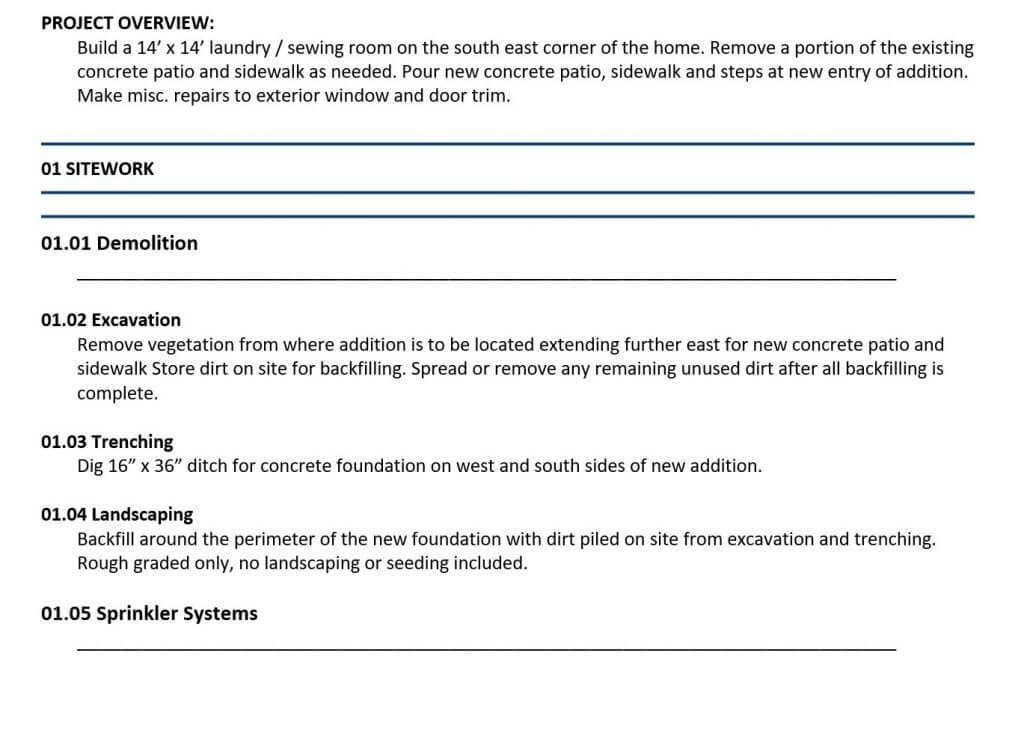
As they’re wrapping up this week’s training Gene tells John. “Next week we’ll get into the pricing of a project.”
The real value of this Proposal System is in the pricing.

Previous posts in this series –
What is “business clarity” and how do you find it?
Learning How to Get a Construction Project Started Out Right
It’s Time for the First Meeting
Being Aware of the Common Bid Mistakes is the Best Way to Avoid Them
Constructing a Building is Better with a Plan, a Proposal is No Different
A Good Construction Proposal Starts by Asking the Right Questions










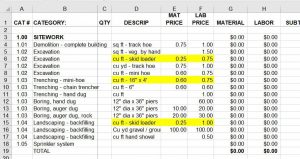


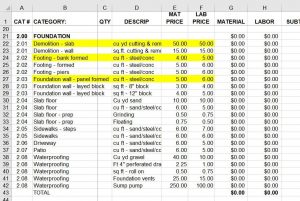
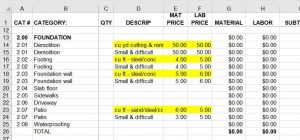

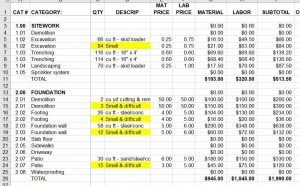




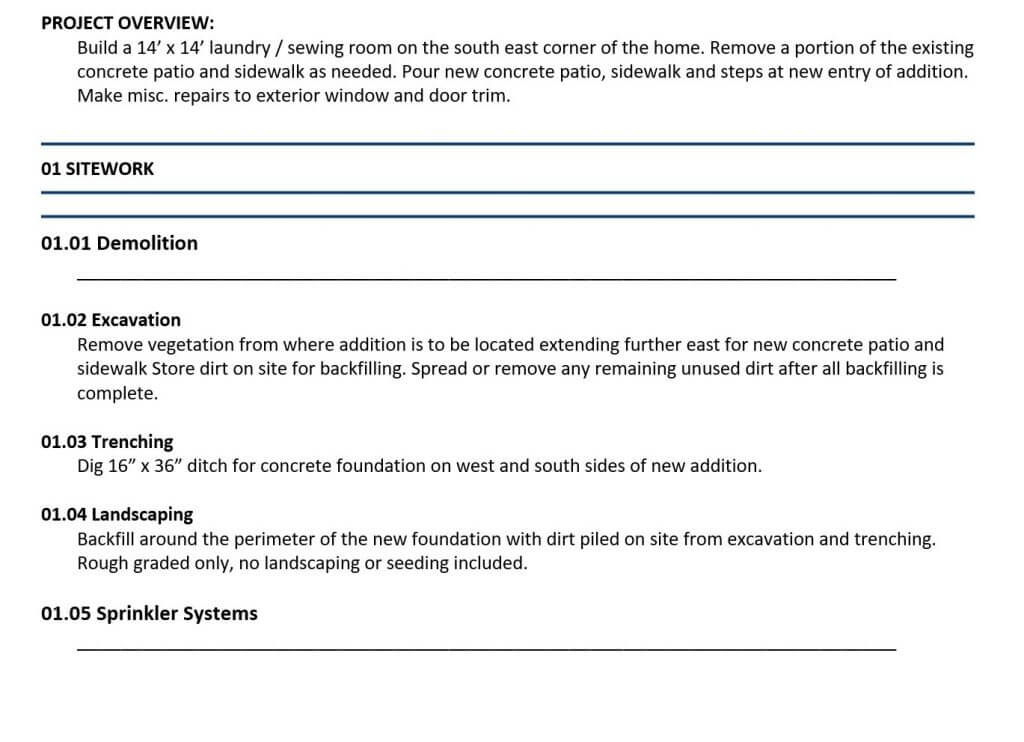


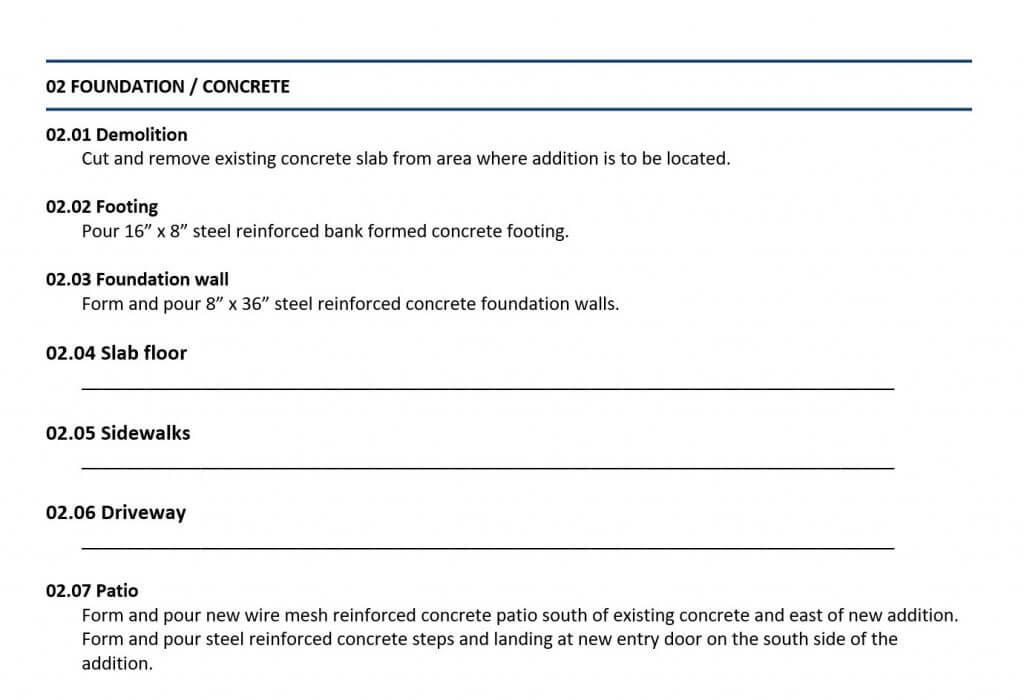
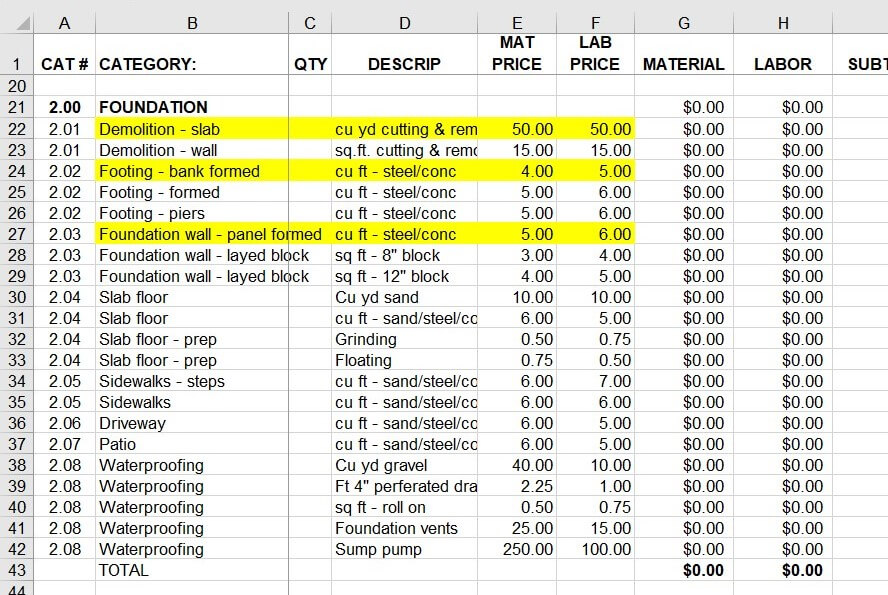
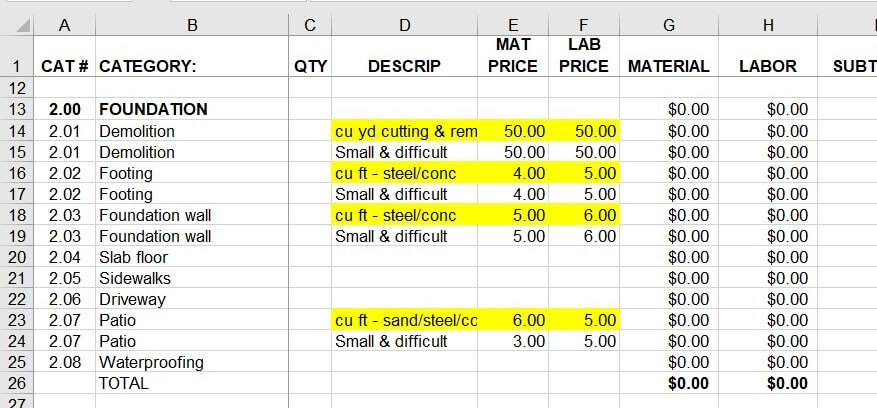

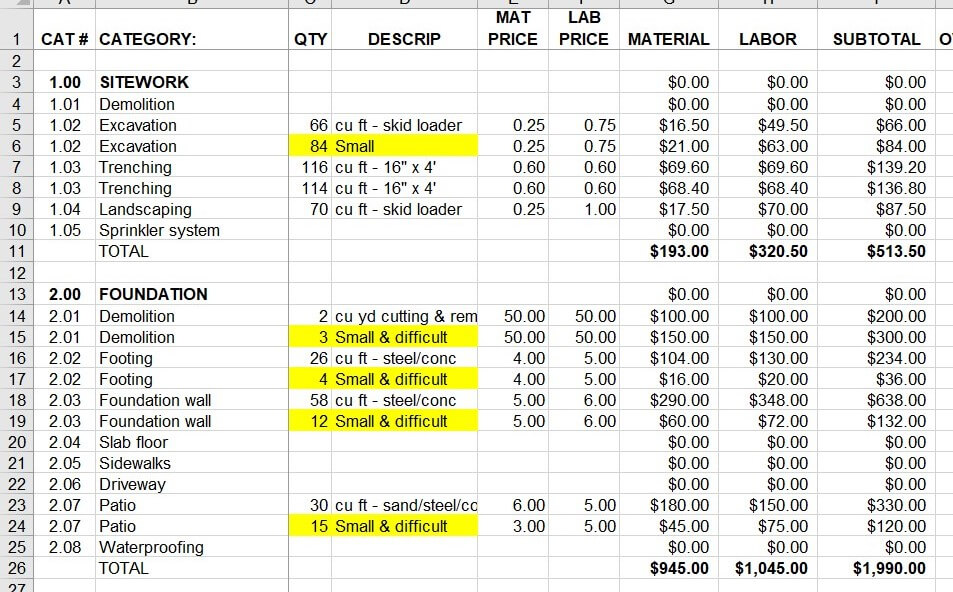









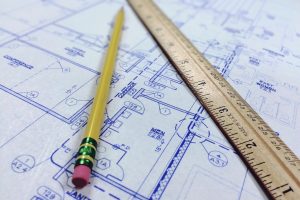



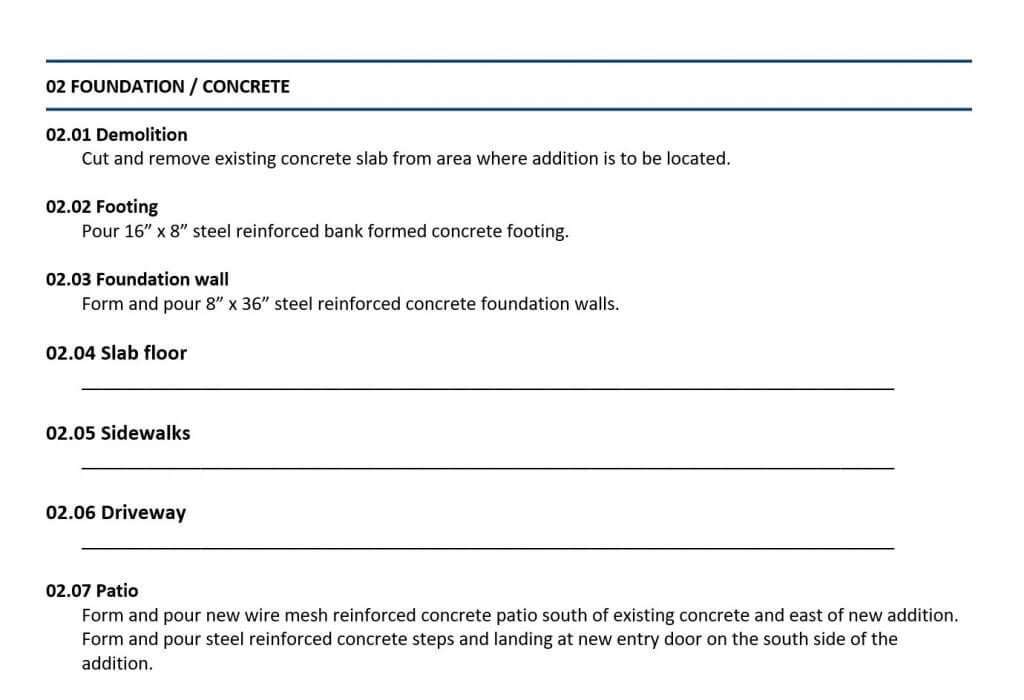



 In the first post of this Blueprint for Building A Better Proposal series, I wrote about this communication problem and that
In the first post of this Blueprint for Building A Better Proposal series, I wrote about this communication problem and that 

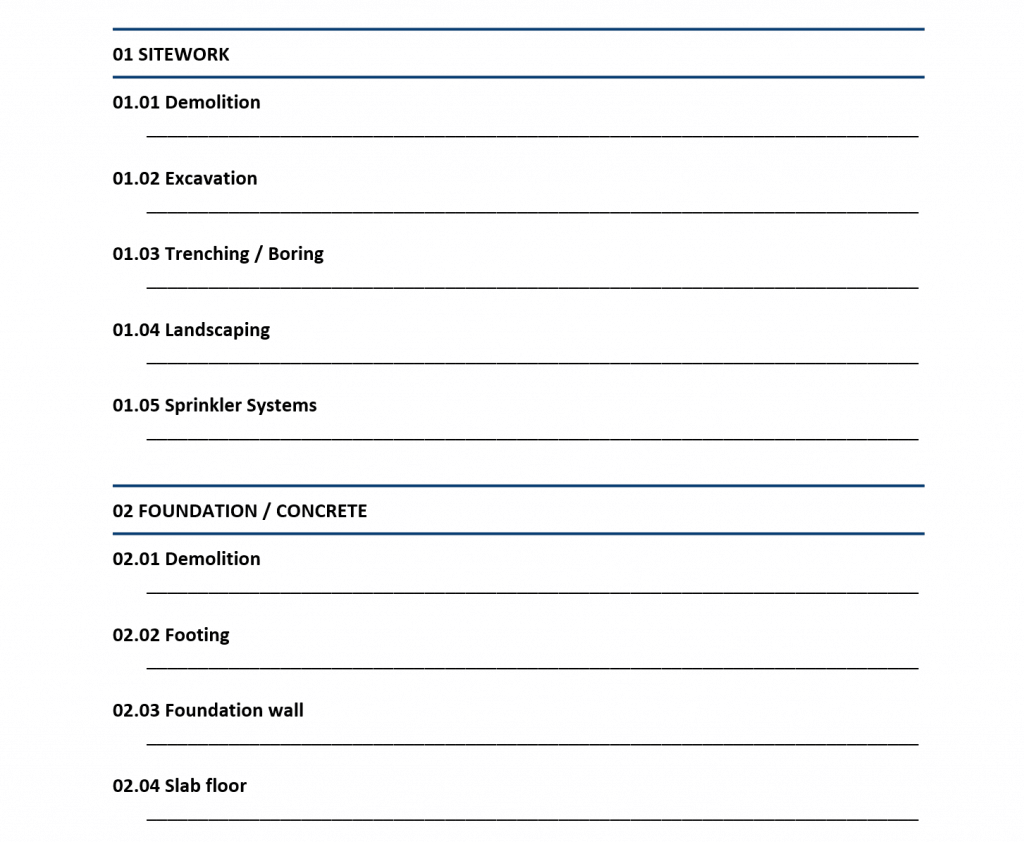


 In the first post of this Blueprint for Building A Better Proposal series, I wrote about this communication problem and that
In the first post of this Blueprint for Building A Better Proposal series, I wrote about this communication problem and that 


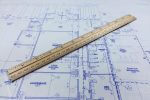

 STEP 1 – Gathering Information
STEP 1 – Gathering Information Next is putting prices to the project. This process involves two different Excel spreadsheets, the Worksheet and the Data Base. Based on the descriptions written on the Bid Sheet, content from the Data Base will be copied and pasted into the correlating cells on the Worksheet. After the pertinent information from the Data Base has been placed on the Worksheet it’s time to fill in the specific quantities.
Next is putting prices to the project. This process involves two different Excel spreadsheets, the Worksheet and the Data Base. Based on the descriptions written on the Bid Sheet, content from the Data Base will be copied and pasted into the correlating cells on the Worksheet. After the pertinent information from the Data Base has been placed on the Worksheet it’s time to fill in the specific quantities.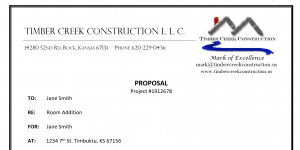



 This problem can, and should, be addressed before any actual construction begins. The underlying issue with any disagreement is, different people seeing things differently. A good contractor’s job is to sort through these differences and develop a clear picture of the project scope, design, schedule and price.
This problem can, and should, be addressed before any actual construction begins. The underlying issue with any disagreement is, different people seeing things differently. A good contractor’s job is to sort through these differences and develop a clear picture of the project scope, design, schedule and price. The first four…half of the list, are communication related. Good communication takes time and effort. Time and effort translate into additional cost. Additional cost means your project’s price is higher. Price is important and often leads to choosing a lower bid. Full circle back to the importance of communication. If you are aware of the differences and are presented a clear plan, you can make the best decision for you and your project.
The first four…half of the list, are communication related. Good communication takes time and effort. Time and effort translate into additional cost. Additional cost means your project’s price is higher. Price is important and often leads to choosing a lower bid. Full circle back to the importance of communication. If you are aware of the differences and are presented a clear plan, you can make the best decision for you and your project.